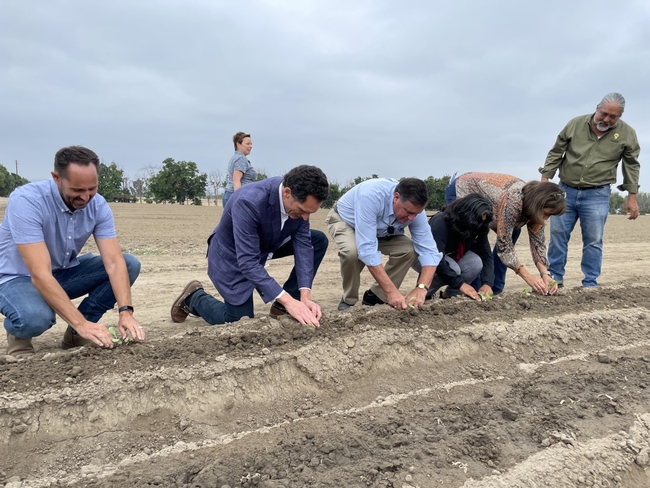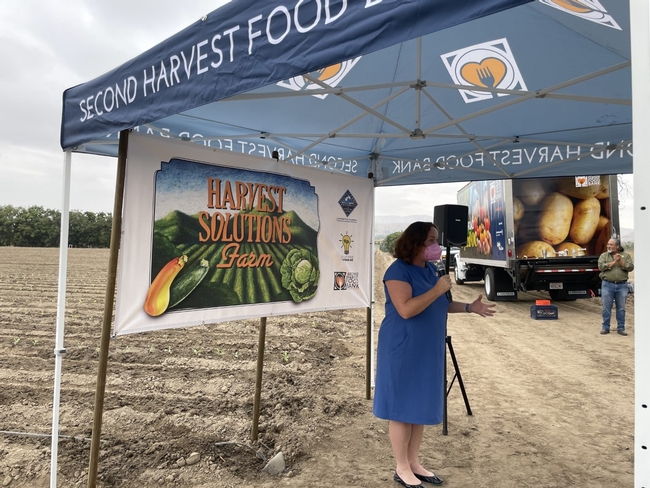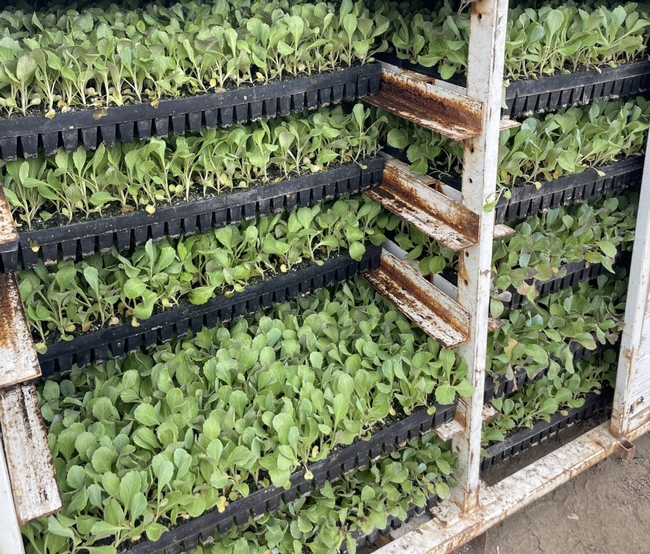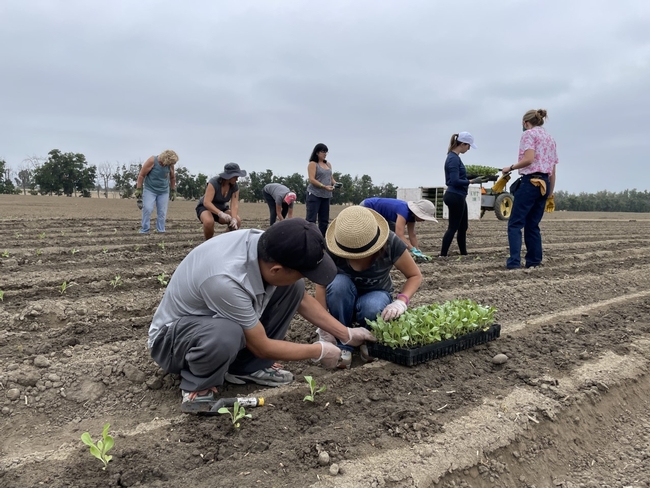To grow vegetables locally, Second Harvest partners with UC South Coast REC
Partnering for California
A.G. Kawamura to grow produce at UC South Coast Research and Extension Center for Orange County food bank
Driven to provide consistent access to nutritious food for residents in Orange County, Second Harvest Food Bank is exploring new fields of possibility – fields amounting to 45 acres at the University of California Agriculture and Natural Resources' South Coast Research and Extension Center in Irvine.
With grower A.G. Kawamura, Solutions for Urban Ag chairman and former California secretary of Food and Agriculture, the food bank recently planted its first cabbage transplants to generate a steady flow of fresh, locally grown produce for its pantry network.
Harvest Solutions Farm is expected to produce 40,000 pounds of cabbage per week as of Nov. 18 when the first harvest is expected to take place. When all 45 acres are fully planted, they are anticipated to yield 160,000 pounds of produce per month.
“Fresh produce is so important to the health of a community,” said Darren Haver, director of the agricultural research facility. “Through this unique public-private partnership, UC South Coast Research and Extension Center is able to provide land and volunteers to assist in planting and harvesting to supply nutritious food to people in our community in need.”
On Aug. 31, Second Harvest Board Chairman Dave Coffaro, Kawamura and Haver were joined at UC South Coast REC by Irvine Mayor Farrah Khan, Representative Katie Porter of Irvine and Orange County Supervisor Don Wagner for the ceremonial planting of the first crop. Volunteers transplanted approximately 26,000 cabbage seedlings.
“This is a historic day for Second Harvest Food Bank of Orange County,” said Coffaro. “Few food banks, if any, have attempted to grow their own food on this large a scale. Our unique good fortune to have access to 45 acres in the heart of an urban center like Irvine, where we are able to cultivate an array of crops and supply our food pantry partners with fresh, nutritious produce brings us a huge step closer to making nutritional security a reality for our entire community.”
Produce key component of Second Harvest's nutritional strategy
Harvest Solutions Farm is the latest component in Second Harvest's strategy to attain nutrition security for all. The food bank has begun focusing on planned nutrition based on consistent access to fresh protein, produce and dairy – rather than relying on situational nutrition driven solely by donations.
Second Harvest is prioritizing the weekly purchase and donation of nutritious food to provide children and families with consistent access to the nutrient-dense food that can set them up for success in school and at work. Fresh produce is a key component of a nutritious diet.
“After this initial planting of cabbage, which is a hearty, versatile vegetable that's easy to grow and a nutritional mainstay in a variety of cultures, the second planting in May 2022 will include zucchini, squash and mini bell peppers,” saidKawamura. “When the 45 acres are fully planted with these vegetables, with regular crop rotations, I expect it to yield 600,000 pounds per month, which is comparable to two 53-foot semi-truck trailers full of locally grown produce going into the community.”
Creating supply chain resiliency and environmental benefits
The farm also allows Second Harvest to mitigate challenges like pandemic-induced inflated food prices and supply chain disruptions.
“We previously bought vegetables from the Central Valley. Last year, we had to work around lags in the supply chain, which means healthy food was less plentiful for Orange County families in need,” Coffaro said. “This farm will create an end-to-end produce supply chain for us and those we serve.”
Further, by growing produce locally, Second Harvest will drastically cut its “time to the dinner plate,” delivering greater health benefits because the produce will be fresher when it reaches families.
The farm will be maintained primarily by 40 volunteers during three-hour shifts, starting with one to two scheduled opportunities per week. Volunteers must be at least 18 years of age, but opportunities for children to participate will be available in the near future.





